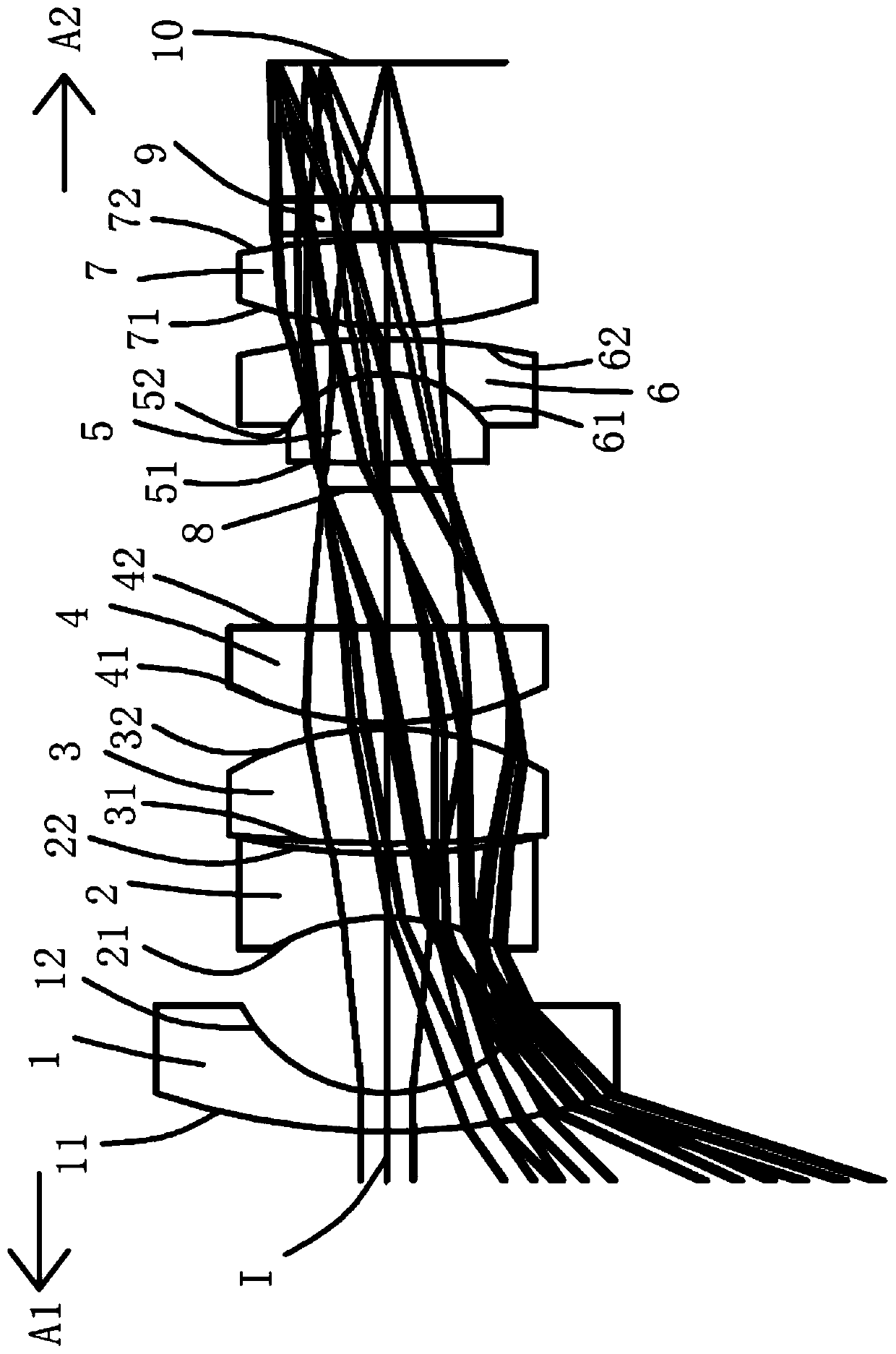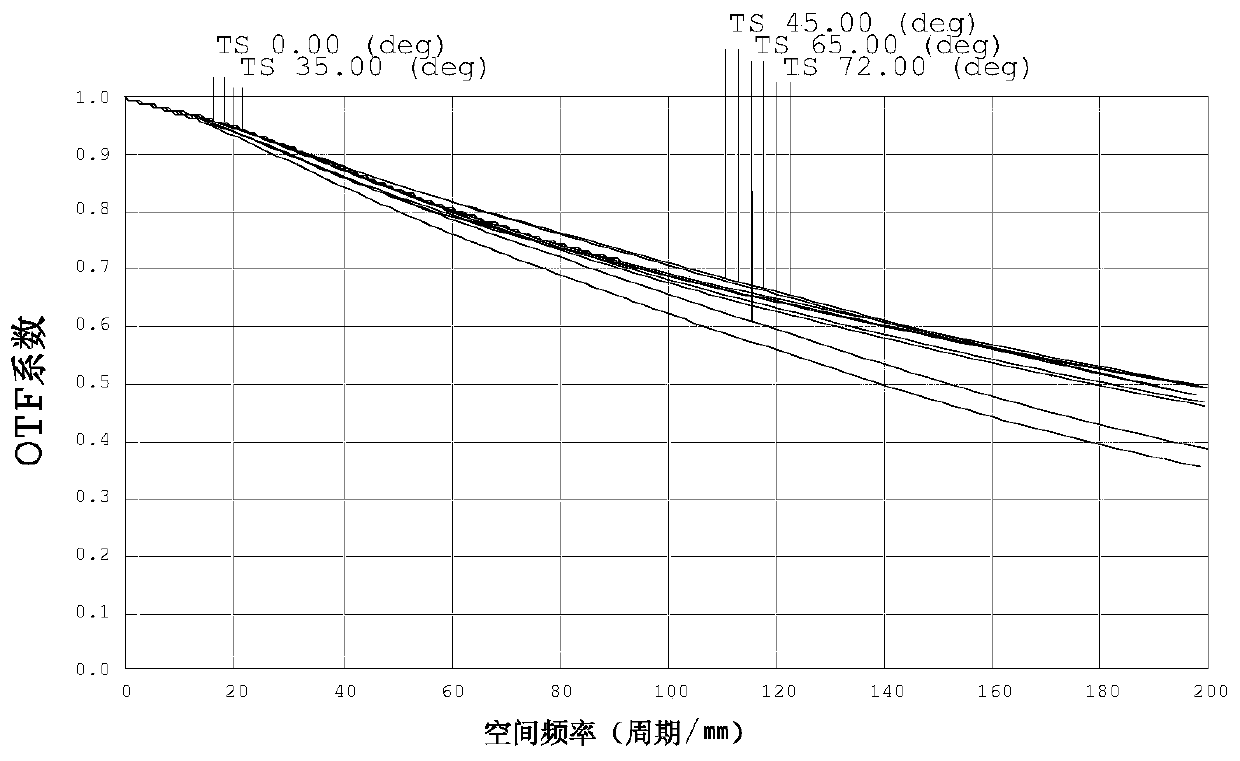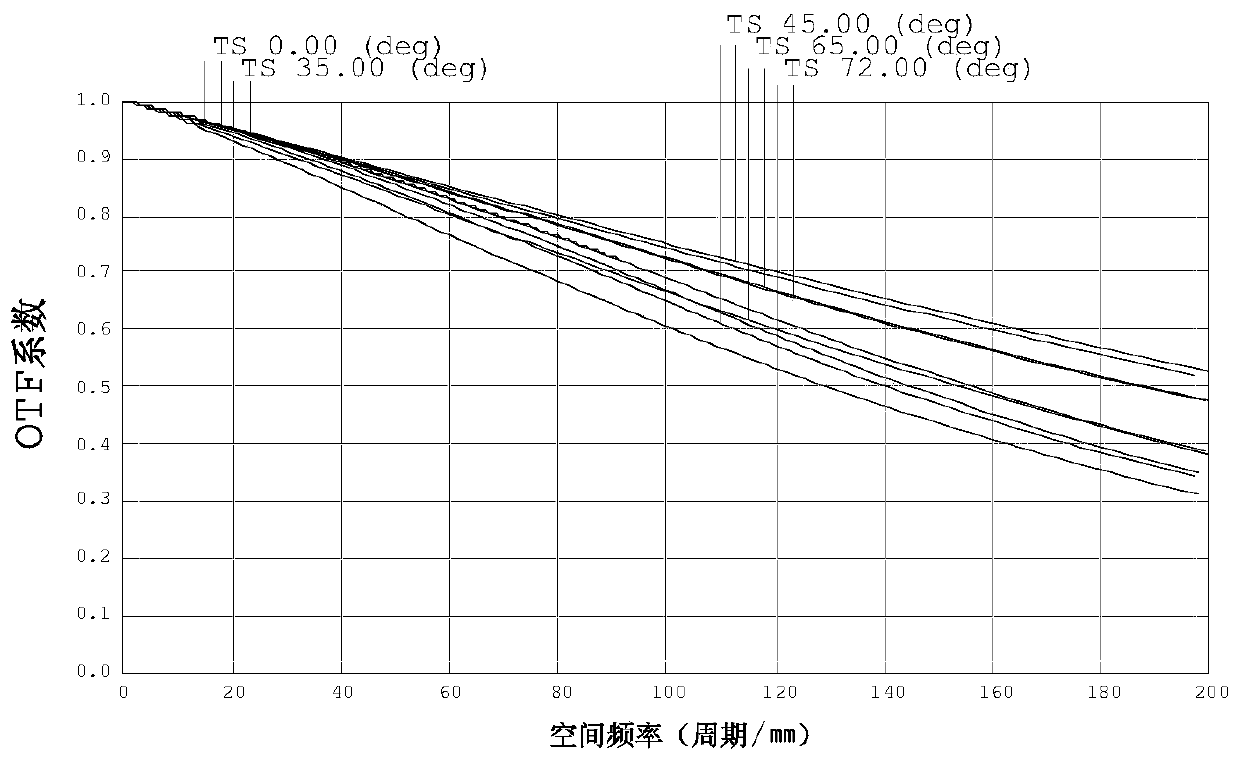Optical imaging lens
An optical imaging lens and imaging technology, applied in the field of lenses, can solve problems such as more loss of transfer function, inaccurate color reproduction, and reduced resolution, and achieve the effects of good infrared confocality, simple structure and high resolution
- Summary
- Abstract
- Description
- Claims
- Application Information
AI Technical Summary
Problems solved by technology
Method used
Image
Examples
Embodiment 2
[0106] Such as Picture 9 As shown, the surface concave and convex and refractive power of each lens in this embodiment and the first embodiment are the same, and only the optical parameters such as the radius of curvature and the lens thickness of each lens surface are different. In order to show the structure of this embodiment more clearly, the same concave-convex surface type reference numerals are omitted.
[0107] The detailed optical data of this specific embodiment is shown in Table 2-1.
[0108] Table 2-1 Detailed optical data of Example 2
[0109]
[0110]
[0111] For the values of the relevant conditional expressions of this specific embodiment, please refer to Figure 41 .
[0112] For the resolution of this specific embodiment, please refer to Picture 10 with 11 , It can be seen from the picture that the resolution is good when switching between infrared and visible environments, and the resolution is high. Please refer to the confocal between visible and infrared 85...
Embodiment 3
[0115] Such as Figure 17 As shown, the surface concave and convex and refractive power of each lens in this embodiment and the first embodiment are the same, and only the optical parameters such as the radius of curvature and the lens thickness of each lens surface are different. In order to show the structure of this embodiment more clearly, the same concave-convex surface type reference numerals are omitted.
[0116] The detailed optical data of this specific embodiment is shown in Table 3-1.
[0117] Table 3-1 Detailed optical data of Example 3
[0118]
[0119]
[0120] For the values of the relevant conditional expressions of this specific embodiment, please refer to Figure 41 .
[0121] For the resolution of this specific embodiment, please refer to Figure 18 with 19 , It can be seen from the picture that the resolution is good when switching between infrared and visible environments, and the resolution is high. Please refer to the confocal between visible and infrared 850...
Embodiment 4
[0124] Such as Figure 25 As shown, the surface concave and convex and refractive power of each lens in this embodiment and the first embodiment are the same, and only the optical parameters such as the radius of curvature and the lens thickness of each lens surface are different. In order to show the structure of this embodiment more clearly, the same concave-convex surface type reference numerals are omitted.
[0125] The detailed optical data of this specific embodiment is shown in Table 4-1.
[0126] Table 4-1 Detailed optical data of Example 4
[0127]
[0128]
[0129] For the values of the relevant conditional expressions of this specific embodiment, please refer to Figure 41 .
[0130] For the resolution of this specific embodiment, please refer to Figure 26 with 27 , It can be seen from the picture that the resolution is good when switching between infrared and visible environments, and the resolution is high. Please refer to the confocal between visible and infrared 850...
PUM
 Login to View More
Login to View More Abstract
Description
Claims
Application Information
 Login to View More
Login to View More - R&D
- Intellectual Property
- Life Sciences
- Materials
- Tech Scout
- Unparalleled Data Quality
- Higher Quality Content
- 60% Fewer Hallucinations
Browse by: Latest US Patents, China's latest patents, Technical Efficacy Thesaurus, Application Domain, Technology Topic, Popular Technical Reports.
© 2025 PatSnap. All rights reserved.Legal|Privacy policy|Modern Slavery Act Transparency Statement|Sitemap|About US| Contact US: help@patsnap.com



